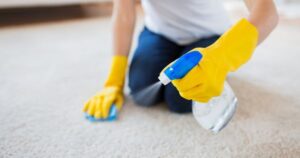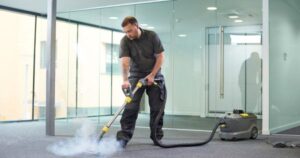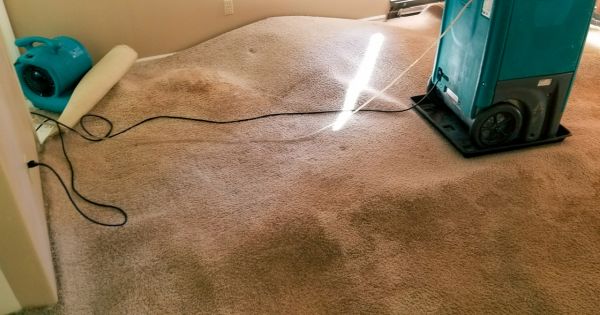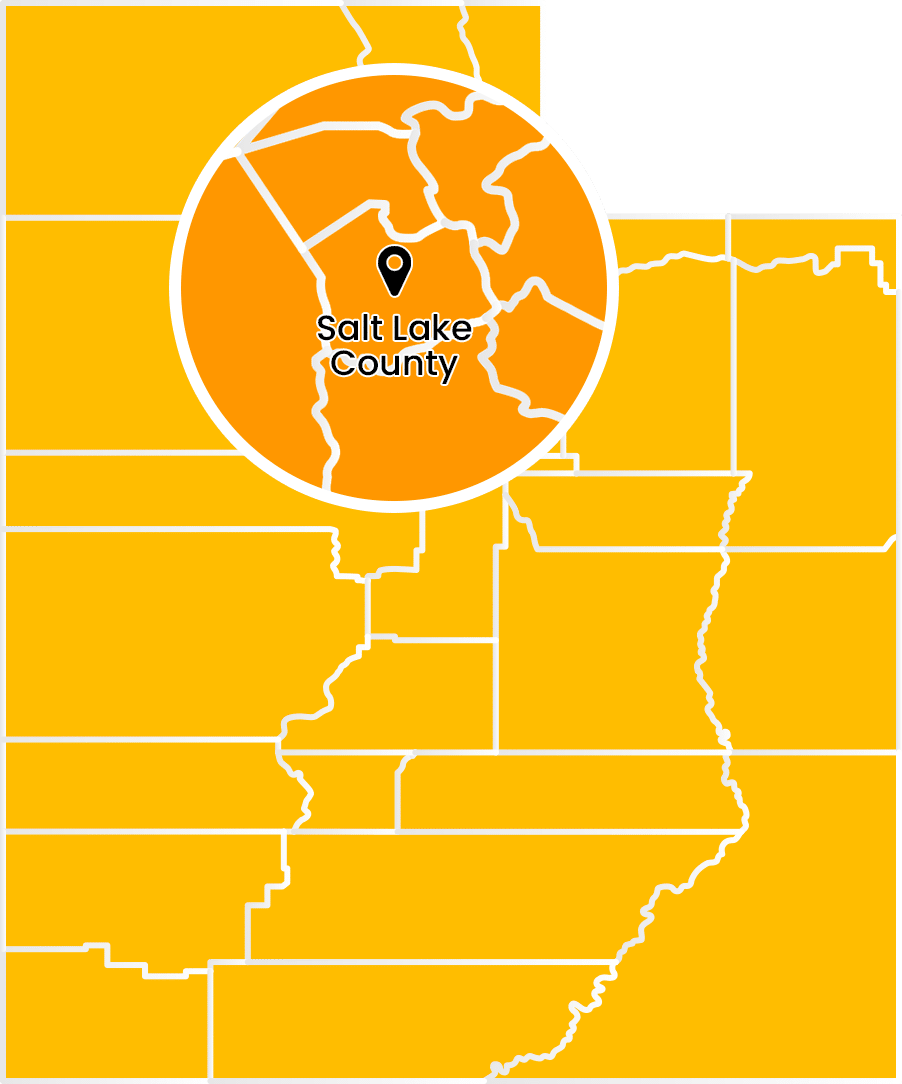In the post-water damage period, dealing with a flooded carpet can be overwhelming. Whether it’s from a burst pipe, heavy rainfall, or a natural disaster, floodwater can damage your carpets if not tackled promptly and properly. Understanding the steps to dry your carpet after a flood is crucial to prevent mold, mildew, and further damage. Let’s dive into the process of carpet cleaning after a flood and explore the best ways to dry your carpet effectively. Plus, if you happen to need professional help with water damage restoration Draper, keep reading to find out our top-notch recommendation.
How Can Flood Damage Your Carpets?
Floodwater can seep deep into your carpets, causing extensive water damage beyond what meets the eye. Besides leaving unsightly stains and odor, floodwater can compromise the structural integrity of your carpet fibers and the underlying padding. Apart from that, stagnant water can become a breeding ground for bacteria and mold, carrying health risks to you and your family.
How to Approach Carpet Cleaning After Flood
The concern following your flood damage is how to clean and dry your carpets without causing further damage or mold growth.
DIY Solutions

Here are some DIY solutions that can help in the process of flood damage carpet cleaning:
- Remove Excess Water: Begin by extracting as much water as possible using a wet vacuum cleaner or towels. Be cautious and ensure your safety by turning off the electricity before stepping into flooded areas.
- Deep Cleaning with Detergent: Prepare a solution of mild detergent and water. Gently scrub the affected areas with a soft brush or sponge to loosen dirt and grime. Rinse thoroughly with clean water and blot dry.
- Baking Soda Odor Absorption: After cleaning the carpet, sprinkle baking soda liberally over the damp areas. Baking soda helps absorb lingering odors and moisture. Allow it to sit for several hours or overnight before vacuuming thoroughly.
- Vinegar Solution for Mold Prevention: Mix equal parts white vinegar and water in a spray bottle. Lightly mist the carpet surface to deter mold and mildew growth. Vinegar’s acidic properties help disinfect and neutralize odor-causing bacteria.
- Steam Iron Method: For stubborn stains or areas with excess moisture, place a damp cloth over the affected area and gently run a steam iron over it. The steam helps lift stains and evaporate moisture trapped within the carpet fibers.
Professional Carpet Cleaning
Seeking professional carpet cleaning services is a better solution, especially for extensive flood damage. Certified technicians have the expertise, equipment, and specialized techniques to ensure thorough cleaning and effective drying, minimizing the risk of further damage and mold growth. These are some of the steps professionals take:
- Pre-treatment: Pre-treating heavily soiled or stained areas with specialized cleaning solutions helps loosen dirt and debris for easier removal during the cleaning process.
- Hot Water Extraction: This method, also known as steam cleaning, involves injecting hot water mixed with cleaning agents into the carpet fibers and then extracting it along with dirt and contaminants using a powerful vacuum.
- Spot Treatment: Stubborn stains and spots are individually treated with targeted cleaning solutions to ensure thorough removal without damaging the carpet fibers.
- Anti-Microbial Treatment: In cases of severe water damage, professionals may apply anti-microbial treatments to inhibit mold and bacteria growth. These treatments help sanitize the carpet and prevent future issues related to water damage.
How to Dry Carpet After Flood?
After cleaning, how can you dry carpet after flood incidents? Here are some of the useful solutions you can choose for your flood carpet cleaning:
- Lift and Air Out: Lift the carpet from the floor and prop it up using furniture or blocks to allow air circulation underneath. This facilitates drying and prevents the growth of mold and mildew.
- Use Absorbent Materials: Place clean towels or absorbent cloths over the damp carpet surface. Press down firmly to soak up the remaining moisture. Replace towels as needed until the carpet feels dry to the touch.
- Sunlight Exposure: If weather allows, take advantage of natural sunlight to help in drying the carpet. Lay the carpet outdoors in a sunny area, ensuring both sides receive exposure to sunlight. UV rays can help kill bacteria and speed up the drying process.
Is It Worth Cleaning and Drying Flood-Damaged Carpet?
While salvaging flood-damaged carpet may seem challenging, it’s often worth the effort and investment, especially if the damage is minimal and the carpet is of high quality. Fast and proper cleaning and drying can prolong the lifespan of your carpet and restore its appearance and functionality.
When to Call the Professionals for Drying?

If the flood damage is extensive, or if you’re unsure about the best course of action, it’s advisable to enlist the help of water damage restoration professionals. Not only will they clean the carpets, but also use cutting-edge drying techniques to restore them and ensure a safe environment. The most common methods professionals use are:
- Fans and Dehumidifiers: To increase air circulation and speed up drying, professionals place fans strategically around the flooded area. Dehumidifiers can also help to remove excess moisture from the air, preventing mold growth.
- Low-Humidity Air Movers: Professionals may use low-humidity air movers to circulate dry air around the carpeted area, speeding the evaporation of moisture. This method helps to dry carpets quickly and prevent mold and mildew growth.
- Steam Cleaning: Steam cleaning can effectively sanitize and remove embedded dirt and contaminants from flood-damaged carpets. Professional steam cleaning equipment penetrates deep into the carpet fibers, ensuring thorough cleaning, but also drying.
- Injection Drying: Professional carpet cleaners may use advanced techniques such as injection drying. This involves injecting hot air or specialized drying agents directly into the carpet and padding to speed up drying from the inside out.
Contact Summit Restoration for Pro Carpet Cleaning and Drying Services
If you’re facing water damage or need professional carpet cleaning services after a flood, don’t hesitate to contact Summit Restoration. Our team of certified technicians is equipped to handle all aspects of water damage restoration, including carpet cleaning and drying, to restore your home or business to its pre-loss condition. Give us a call at (385) 469-2638 or visit our website to request a free estimate!






